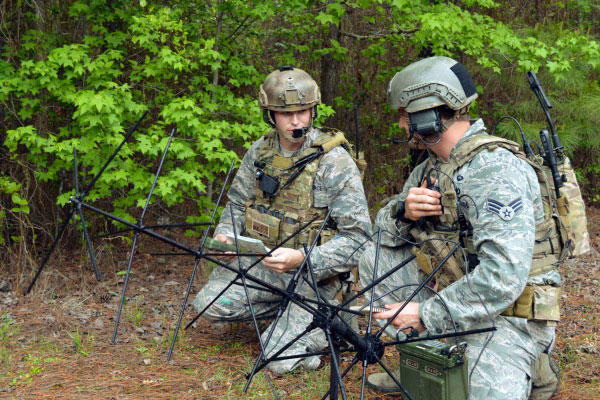Some U.S. Air Force personnel will suit up in the Army's new camouflage pattern next year, but most airmen will have to keep wearing their service's distinctive tiger-stripe pattern.
The Air Force has decided not to follow the Army's recent decision to replace its digital camouflage pattern. The ruling marks a reversal from a decade ago when the Air Force was quick to adopt its own digital pattern after the Army unveiled its new pixilated Universal Camouflage Pattern in 2004.
The tiger-stripe pattern on the Airmen Battle Uniform will remain in service for garrison use, said Air Force spokeswoman Rose Richeson.
"There is no plan to change that currently," she said.
Airmen deploying on missions with the Army will wear service's new Operational Camouflage Pattern, Richeson said, explaining the Air Force uniform policy for airmen attached to Army units.
The new OCP is very similar to MultiCam, the pattern the Army chose in 2010 for soldiers to wear in Afghanistan. However, Army officials maintain that there are differences between the two designs.
OCP is also known as Scorpion W2, a revised version of the original Scorpion pattern that Crye Precision LLC developed for the Army's Future Force Warrior in 2002.
The service plans to make Army Combat Uniforms, printed in the new pattern, available at Military Clothing Sales Stores next summer. Soldiers are expected to retire their current uniform and begin wearing the new pattern by the summer of 2018.
That is also the deadline Congress has imposed for the Pentagon to develop a joint combat uniform. The language in the National Defense Authorization Act for Fiscal 2014 takes aim at service-specific camouflage patterns.
These patterns have resulted in billions of dollars spent to field unique uniforms and equipment that in some cases has focused more on creating a visual brand for each service than effective concealment for the battlefield.
Moving to one joint combat uniform doesn't mean there would only be one camouflage pattern. Different patterns could still be designed for specific geographic requirements such as the woodland or desert patterns. However, each service would not design unique versions, according to the Congressional language.
-- Matthew Cox can be reached at matthew.cox@monster.com





























